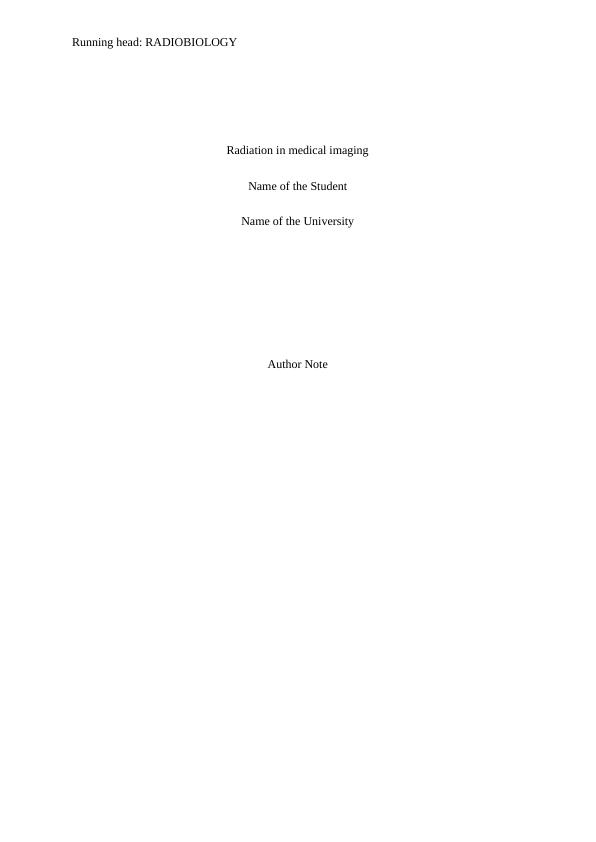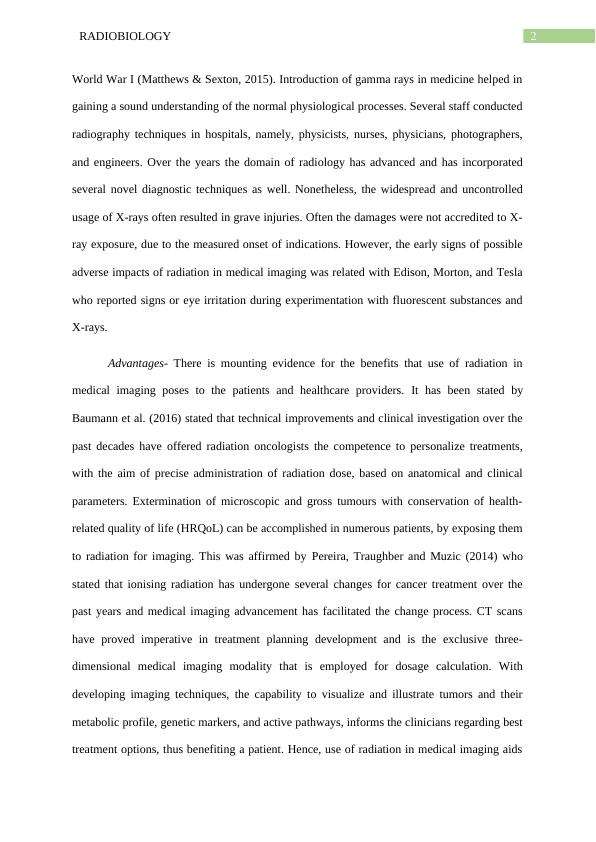Radiation in Medical Imaging
8 Pages2115 Words61 Views
Added on 2023-04-20
About This Document
This essay discusses the use of radiation in medical imaging, including its advantages and potential adverse effects. It explores the history of radiation in medical imaging and its impact on healthcare. The essay also highlights the importance of radiation safety and the need for proper policies to limit radiation exposure.
Radiation in Medical Imaging
Added on 2023-04-20
ShareRelated Documents
End of preview
Want to access all the pages? Upload your documents or become a member.
Quality Control and Quality Assurance in Radiography
|25
|7184
|75
Report on Imaging Modalities
|7
|1251
|286
Diagnostic Imaging Techniques in Paediatric Cancer
|11
|3061
|438
CBCT Imaging in Dentistry: History, Techniques, and Radiation Protection
|25
|11050
|317
Radiography Imaging Techniques - Assignment
|6
|2493
|341
Medical Imaging for Diagnosing Child Abuse Injuries
|4
|811
|300



